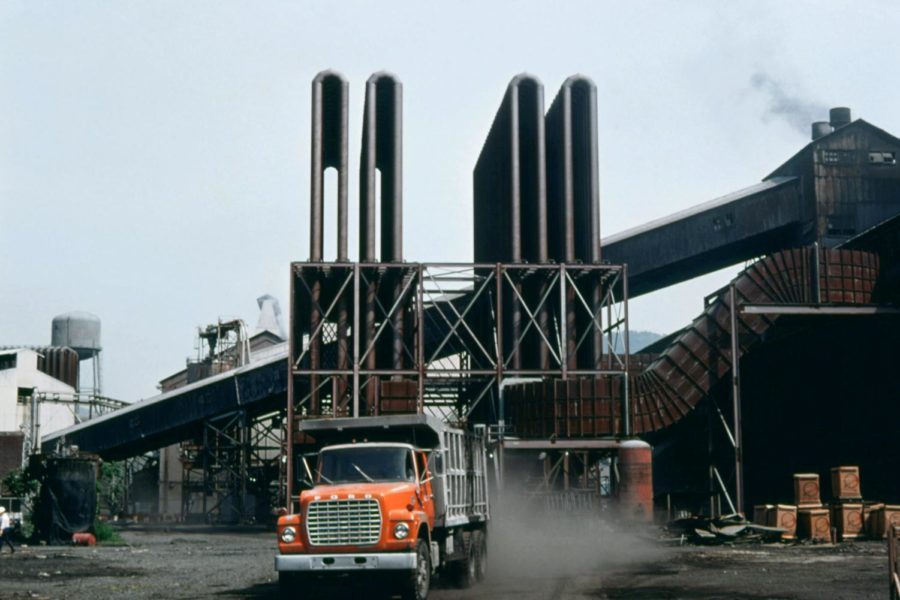Chemical Contamination: Is the EPA Doing Enough?
The EPA’s regulations have been lacking. Could the Dupont chemical scandal be repeated?
Inside the walls of an industrial factory, dangerous chemicals are often being used, threatening the lives of workers and the environment around the factory.
Forever chemicals, also formally known as PFAS (perfluoroalkyl/polyfluoroalkyl substances) are used in almost all household products; chemical use is now almost a necessity. Forever chemicals are categorized by the National Science Foundation (NSF) as “among the most persistent chemicals…ever created” (2022). It takes a huge amount of energy to break down carbon-fluorine bonds. However, such wide and normalized use of an almost indestructible chemical is deemed dangerous, risking irreversible damage to the environment. According to one report by the Centers for Disease Control and Prevention’s National Health and Nutrition Examination Survey (NHANES), PFAS are found within the blood of 97% of Americans and the numbers have been growing due to the increased dependence on PFAS since the 1960s.
This chemical is harmful to the human body. PFAS have side effects that increasingly worsen the more the chemical enters the bloodstream or the longer the chemical resides in the human body. There is a correlation between the cross contamination of PFAS and humans that result in many health side effects such as “kidney cancer, thyroid disease, liver damage, developmental toxicity, ulcerative colitis, high cholesterol, and immune dysfunction” (Sneed, 2021). Moreover, PFAS particles can easily migrate into the air, dust, food, soil and water, with greater exposure risk due to the increase in processed food packaging and the growth of the processed food industry.
PFAS are a common chemical but have been proven to be deleterious to the human body. Although there are regulations against PFAS usage, there should be more restrictions. The EPA (Environmental Protection Agency) has only done the bare minimum in response to the increase in chemical contamination.
In 2015, DuPont, a large chemical company, began to have an alarming amount of allegations arise regarding harmful chemical association, all of such involving a specific PFAS that is known as teflon. Dupont spent five decades using and profiting from C8 (the teflon PFAS) while conducting extensive internal research on the chemical confidential. At the time of DuPont using C8, this chemical did not exist to the EPA, and C8 was unknown to the public. Though the EPA is in charge of regulating the contamination of chemicals, “the EPA has little power to prevent a company from using a chemical before it is proven to be safe” (Lerner, 2015). In Europe, chemicals must be proven to be safe before they can be legally distributed and sold, but in America “killer chemicals are essentially innocent until proven guilty.”
Though DuPont was able to go under the radar for using C8, there were numerous other issues that arose because of chemical contamination.
There were a multitude of visible environmental issues. DuPont’s bustling factory was surrounded by a quiet Virginian town with rural hills with cattle and the slow hum of the town’s people. Though the cattle would fatten up nicely each year the cattle began to drop like flies, “dying inexplicably, and in droves” (Ryssdal, 2019). A farmer’s herd of about 300 dwindled to almost less than half in less than two years. The problem wasn’t food, it was the water that the cattle were drinking. The water in the streams near the farm were described as olive green with a “greenish brown foam encrusting the grassy bank.” The water contained the fluoride PFAS compound that the people of this Virginian town and the livestock were drinking.
The effect of DuPont’s chemical misuse was not brought to light until a national court scenario was brought to the media by Robert Billiot. Only after DuPont was brought to the EPA’s attention was DuPont charged with violation of the already existing Toxic Substances Control Act. However, the settlement statement emphasized that DuPont failed to inform the EPA on the dangers of C8.
DuPont, using this chemical for decades, was able to grow their company knowing that C8 was harmful to animals since the 1960s and aware of the cancerous tumors caused by C8 since the 1990’s. Yet, the EPA still was under the impression that DuPont will self regulate their usage of highly profitable chemicals and report their findings to the EPA.
This expectation of the EPA allowed for Parkersburg, the small Virginian town of 30,000, to be exposed to an extortionate amount of PFAS. Although the majority of the American population have been exposed to PFAS because of the commercialized distribution of them, Parkersburg had a lot more drastic health effects. These side effects would have been prevented if the EPA had not neglected them. After DuPont paid the fees from the lawsuit, the money was used for a class-action suit to conduct an epidemiological study. The public criticized DuPont but left the EPA unscathed when the EPA had full power to stop the growing risk of PFAS contaminating DuPont’s surrounding water system.
The EPA has added more regulations and restrictions involving chemicals, but there is not enough. The actions implemented encourages the companies manufacturing these products to self regulate, and this puts many customers at risk. Action from the EPA is a necessary step in keeping the American population safe.
The EPA has added more regulations and restrictions involving chemicals, but there is not enough. The actions implemented encourages the companies manufacturing these products to self regulate, and this puts many customers at risk. Action from the EPA is a necessary step in keeping the American population safe.
Nora Gupta is a Chief Graphic Designer and an Athletics Section Editor for 'The Observatory' yearbook. She is also a Staff Reporter for 'The Science Survey.'...











